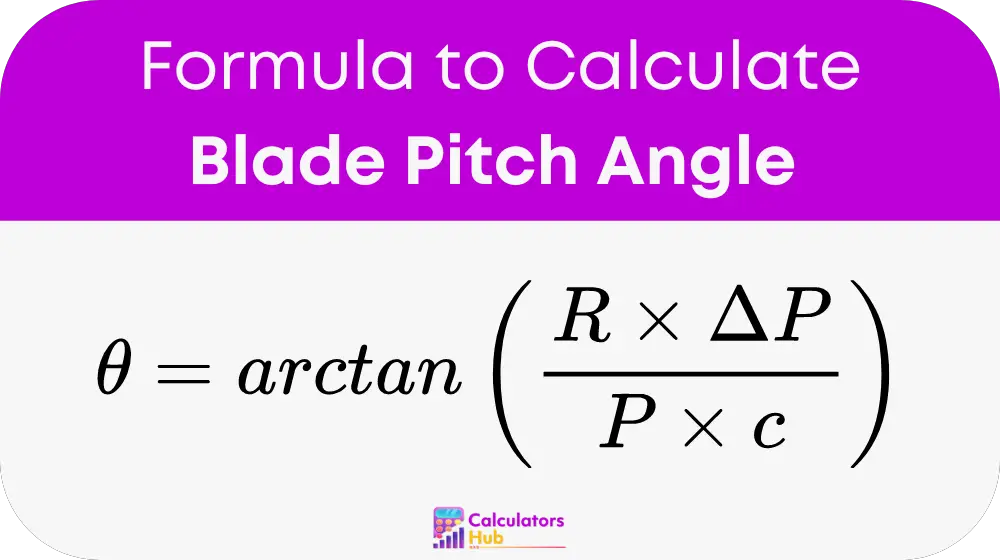The Blade Pitch Angle Calculator determines the optimal angle at which a blade should be set to achieve the desired performance in various applications such as wind turbines, propellers, and fans. The pitch angle affects how effectively the blade interacts with the air or fluid, influencing efficiency and power output. Accurate calculation of the blade pitch angle is crucial for optimizing performance and ensuring that the blade operates efficiently within its design parameters.
Formula of Blade Pitch Angle Calculator
To calculate the Blade Pitch Angle (θ), use the following formula:

Where:
- θ = Blade pitch angle (in degrees)
- R = Distance from the hub to the point where the blade pitch angle is measured (in meters)
- ΔP = Change in pressure across the blade (in Pascals)
- P = Air density (in kg/m³)
- c = Chord length of the blade (in meters)
General Reference Table
For convenience, here is a table showing example blade pitch angles based on different parameters:
| Distance from Hub (m) | Change in Pressure (Pa) | Air Density (kg/m³) | Chord Length (m) | Blade Pitch Angle (°) |
|---|---|---|---|---|
| 1.0 | 150 | 1.225 | 0.25 | 86.37 |
| 1.5 | 200 | 1.225 | 0.30 | 89.98 |
| 2.0 | 250 | 1.225 | 0.35 | 87.94 |
| 1.0 | 300 | 1.225 | 0.50 | 78.36 |
| 2.0 | 350 | 1.225 | 0.40 | 90.00 |
Example of Blade Pitch Angle Calculator
Assume you need to find the blade pitch angle for a turbine blade with the following parameters:
- R = 1.5 meters
- ΔP = 200 Pascals
- P = 1.225 kg/m³ (typical air density at sea level)
- c = 0.3 meters
Apply the Formula:
- Calculate the argument of the arctan function:(R * ΔP) / (P * c) = (1.5 * 200) / (1.225 * 0.3) = 1000 / 0.3675 ≈ 2726.76
- Find the arctangent of 2726.76:θ = arctan(2726.76) ≈ 89.98 degrees
Thus, the blade pitch angle is approximately 89.98 degrees.
Most Common FAQs
The blade pitch angle affects how efficiently a blade can interact with the air or fluid. Proper calculation ensures that the blade operates at the optimal angle for maximum efficiency, power output, and stability.
The blade pitch angle is influenced by several factors including the distance from the hub to the measurement point, the change in pressure across the blade, the air density, and the chord length of the blade.
< div style="clear:both; margin-top:0em; margin-bottom:1em;">Yes, the formula is applicable to various types of blades, including those used in wind turbines, propellers, and fans. However, ensure that the parameters used in the formula are relevant to the specific application and design of the blade.